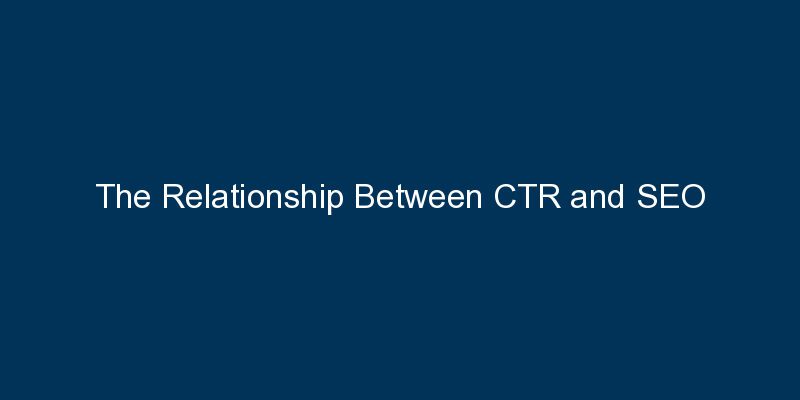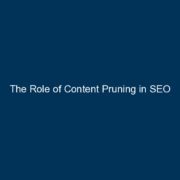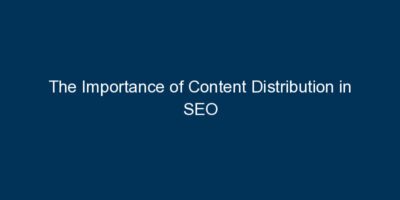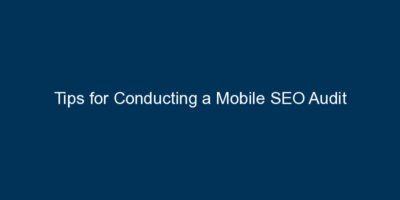Introduction: Click-Through Rate (CTR) is a crucial metric in digital marketing, and its relationship with SEO is profound. In this blog, we’ll delve into the significance of CTR in the context of search engine optimization, understanding how it impacts rankings, and actionable strategies to improve CTR for enhanced SEO performance.
1. Unveiling the Connection: CTR and Search Engine Rankings: Click-Through Rate, the percentage of users who click on a search result, has a direct impact on search engine rankings. Google’s algorithms consider CTR as an indicator of a page’s relevance and user satisfaction.
2. The Role of CTR in SEO: A Key Performance Indicator: CTR is a key performance indicator for SEO. A higher CTR suggests that your content is resonating with users, leading to improved rankings. Understanding this relationship is vital for optimizing your content strategy.
3. Crafting Compelling Meta Titles and Descriptions: The First Impression: The meta title and description are the first elements users see in search results. Crafting compelling and relevant meta titles and descriptions encourages clicks, positively influencing CTR.
4. Utilizing Rich Snippets: Enhancing Visibility and Information: Implement rich snippets to provide users with additional information directly in the search results. Rich snippets not only enhance visibility but also attract users looking for specific details, contributing to a higher CTR.
5. Optimizing URL Structure: Clear and Descriptive Links: Ensure your URL structure is clear and descriptive. Users are more likely to click on links that convey a sense of what the page is about. A well-optimized URL structure contributes to a positive user experience.
6. A/B Testing Meta Elements: Refining for Maximum Impact: Conduct A/B testing on meta titles, descriptions, and other elements to refine your approach. Testing different variations allows you to identify the messaging that resonates best with your target audience, improving CTR.
7. Engaging Content: The Core of Improved CTR: Create engaging and valuable content. Content that addresses user needs and provides solutions is more likely to attract clicks. User satisfaction with your content positively influences CTR and, subsequently, SEO.
8. Mobile-Friendly Optimization: Adapting to User Habits: Given the rise in mobile search, ensure your website is mobile-friendly. A seamless mobile experience contributes to higher CTR as users are more likely to engage with well-optimized, responsive pages.
9. Page Speed Matters: Fast Loading for Better CTR: Optimize your website’s page speed. Slow-loading pages can lead to a higher bounce rate and lower CTR. Prioritize a fast and responsive website for a positive impact on user engagement.
10. Strategic Use of Call-to-Action (CTA): Guiding User Behavior: Incorporate strategic calls-to-action in your content. A clear and compelling CTA guides user behavior, encouraging them to take the desired action and boosting overall CTR.
11. Monitoring and Analyzing CTR Data: Informed Decision-Making: Regularly monitor CTR data using analytics tools. Analyze the performance of different pages and content types. Data-driven insights enable informed decision-making for ongoing optimization efforts.
12. Continuous Refinement: Adapting to Changing Trends: SEO is dynamic, and user behavior evolves. Continuously refine your SEO strategy based on changing trends and user preferences. Staying adaptable ensures that your CTR optimization efforts remain effective over time.
Conclusion: The relationship between CTR and SEO is intricate, with CTR serving as a valuable metric that influences search engine rankings. By crafting compelling meta titles and descriptions, utilizing rich snippets, optimizing URL structure, conducting A/B testing, creating engaging content, prioritizing mobile-friendly optimization, optimizing page speed, strategically using CTAs, monitoring CTR data, and continuously refining your approach, you can enhance CTR and, in turn, improve your website’s SEO performance.























Comments